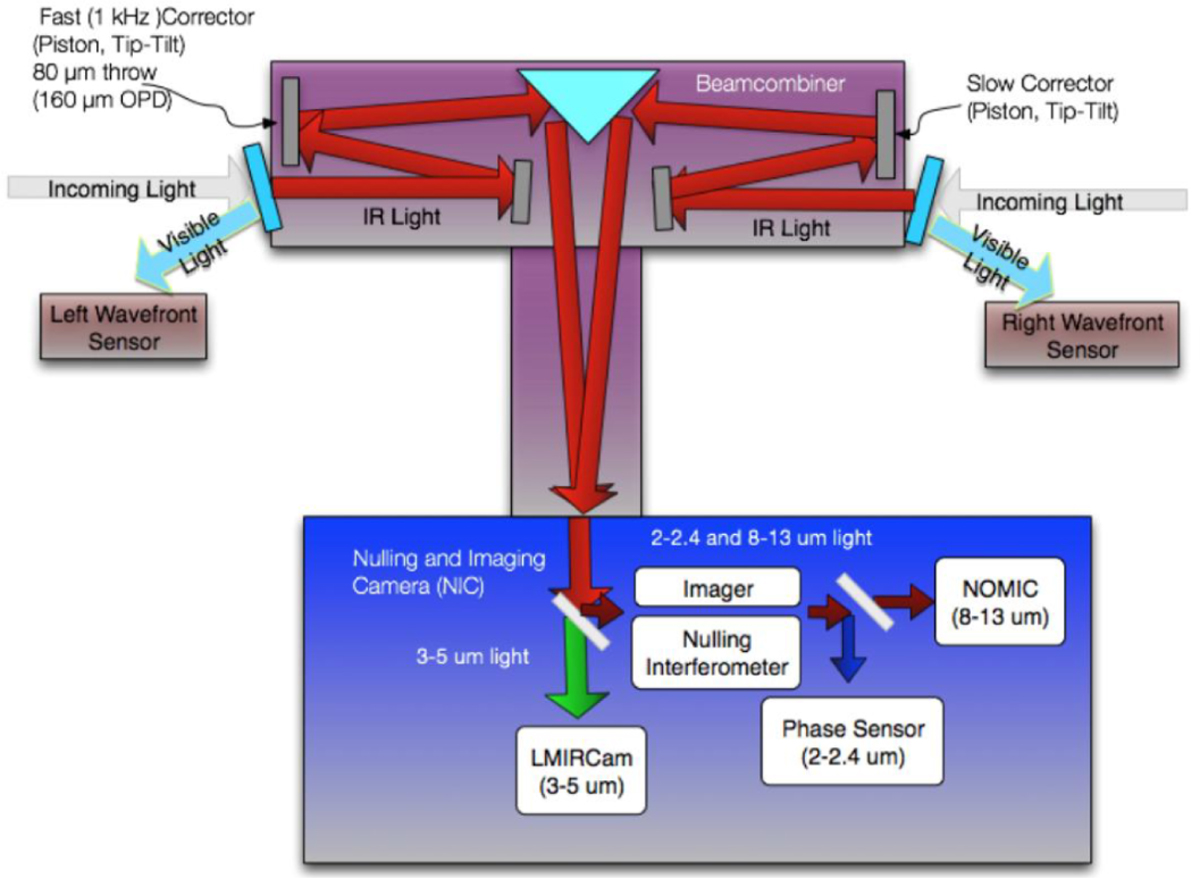Fig. 2

Download original image
Block diagram of the LBTI architecture. Light from the two apertures enters from the top left and right and passes through the beam combiner subsystem (purple) and the NIC cryostat (blue). Both the beam combiner and the NIC are maintained at cryo-temperatures. At the entrance of the beam combiner subsystem, visible light is reflected by dichroics and directed to the wavefront sensing (WFS) units. Infrared light is transmitted to the beam combiner where two mirrors adjust the tip-tilt and the optical path difference (OPD) of the beams for nulling interferometry. After recombination of the two LBTI pupils by the roof mirror, the light is split in the NIC. The L-band (3-5 μm) is directed to LMIRCam for high-contrast imaging of exoplanets, whereas the K-band (1.5-2.5 μm) is directed to Phasecam to monitor the differential tip-tilt and phase between the two apertures. Finally, the N-band (8-13 μm) light is directed to NOMIC which can be used in either imaging interferometry or nulling interferometry modes.
Current usage metrics show cumulative count of Article Views (full-text article views including HTML views, PDF and ePub downloads, according to the available data) and Abstracts Views on Vision4Press platform.
Data correspond to usage on the plateform after 2015. The current usage metrics is available 48-96 hours after online publication and is updated daily on week days.
Initial download of the metrics may take a while.


